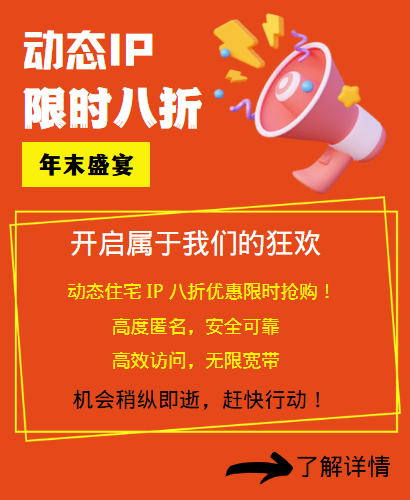In the field of digital marketing, Twitter, as a powerful platform for real-time information flow and social interaction, provides a broad marketing stage for enterprises and personal brands. However, in order to stand out in this fast-paced and highly competitive environment and effectively avoid potential risks, it is crucial to master the right strategy. This article will explore the essence of Twitter marketing from the two dimensions of risk avoidance and exposure enhancement, and briefly mention the auxiliary role of 98IP agent in strategy implementation.

I. Risk avoidance: Building a solid Twitter marketing foundation
1.1 Comply with platform rules and legal boundaries
- Understand and follow Twitter policies: The first principle is to be familiar with and strictly abide by Twitter's terms of service and community guidelines, and avoid posting illegal content, such as hate speech, spam, copyright infringement, etc., which are the main reasons for account bans.
- Legal compliance: Ensure that marketing activities comply with the laws and regulations of the country or region where you are located, especially those regarding advertising, privacy protection and data use.
1.2 Maintain brand image and reputation
- Actively manage comments and replies: Respond to users' positive and negative comments promptly and politely, demonstrate the brand's professionalism and affinity, and effectively manage public opinion.
- Crisis public relations preparation: Prepare a crisis response plan in advance, and handle negative events quickly and transparently to protect the brand image from damage.
1.3 Use proxy services
- Comply with proxy: In some cases, using proxy services (such as 98IP proxy) can help bypass geographical restrictions or protect privacy.
- Pay attention to proxy quality: Choose a reliable and stable proxy service to avoid connection problems caused by unstable proxy that affect user experience.
II. Improve exposure: maximize Twitter marketing effect
2.1 Content is king: create eye-catching content
- Equal emphasis on creativity and relevance: Combine current hot topics, user interests and brand characteristics to create creative and highly relevant content to increase user engagement.
- Use multimedia elements: Use multimedia forms such as pictures, videos, GIFs, etc. to enrich content expression. Visual elements can often attract users' attention more intuitively.
2.2 Accurate positioning and target audience analysis
- Use data analysis tools: Use tools such as Twitter Analytics to analyze user behavior, understand the interest preferences, active time periods, etc. of the target audience, and achieve accurate push.
- Build segmented audience groups: Create customized campaigns based on user data and implement differentiated marketing strategies for different segmented groups.
2.3 Interaction and cooperation strategies
- Promote user participation: Increase user interaction through Q&A, voting, challenges, etc., and improve the dissemination and participation of content.
- KOL/Internet celebrity cooperation: Cooperate with opinion leaders or Internet celebrities in the industry, use their influence to expand brand exposure, and achieve effective conversion of fan groups.
III. Summary: Continuous optimization and flexible response
Twitter marketing is a process of continuous iteration and flexible adjustment. The key to success lies in constantly analyzing data, optimizing content strategies, and strengthening the connection between brands and users. At the same time, using technical tools such as agency services can effectively broaden the boundaries of marketing. Remember, sincere communication and value creation are always the core of winning user trust and loyalty.
Through the implementation of the above strategies, not only can potential risks be effectively avoided, but also the brand's exposure and influence on Twitter can be significantly improved, laying a solid foundation for the company's digital transformation. In the rapidly changing social media environment, maintaining an attitude of learning and innovation is the key to continuous leadership.
Related Recommendations
- Why do travel companies need overseas residential agency services?
- Efficient batch registration of Outlook mailboxes: Proxy IP application strategy
- Exclusive static residential IP: stable, high-speed, and secure, creating a dedicated network channel
- Shrimp skin e-commerce strategy: How can overseas agency services empower you!
- How to solve the problem of frequent drop of proxy IP during crawler grabbing data?
- Is there a difference in agent IP selection from different countries for cross-border e-commerce in Southeast Asia?
- What is the role of http proxies?
- When using proxy IP modifiers for data collection, ensuring data security is crucial
- What should I do if my notebook is set with static IP and cannot access the Internet?
- Analysis of the pros and cons of IP online proxy: Do you really need it?

